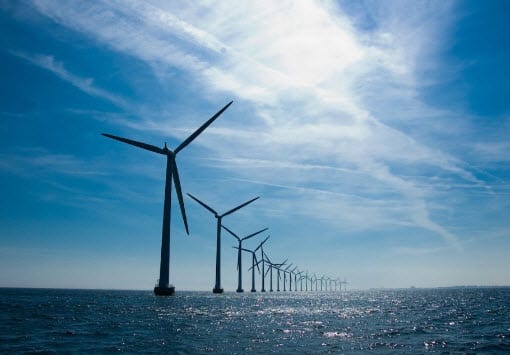
Offshore wind energy can power the East Coast
September 20, 2012Offshore wind energy capable of handling energy needs of entire region
A new study from Stanford University suggests that the U.S. East Coast could be entirely powered through offshore wind energy. Wind energy has been receiving a great deal of support from the federal government recently. More wind energy projects are finding a home in the U.S. due to federal policies and these projects, in turn, may provide the country with extreme energy benefits. The study suggests that without the use of other alternative energy systems, all of the energy requirements for the East Coast can be met with wind turbines that are readily available.
Study shows offshore wind energy turbines hold a great deal of potential
According to the study, titled “US East Coast Offshore Wind Energy Resources and their Relationship to Peak-time Electricity Demand,” energy demand in the East Coast can be met through the use of 144,000 wind turbines. These turbines would have to be located offshore in order to harness the vast potential of ocean winds. Each turbine would only need to produce 5 megawatts of electricity at maximum in order to meet the needs of the entire region.

Turbines would be located in areas with strong winds, far out to sea
The study suggests that these offshore wind turbines would not be considered an eyesore for those that love coastal views. These offshore wind turbines would be located beyond eyesight of any coast in order to take the most advantage of ocean winds. The study also notes that winds during the day would be highest in the regions where the turbines would be present. These turbines would then be generating the majority of their electricity during the times when demand is highest in the region.
Researchers suggest more diverse approach to energy problems
Though the study suggests that wind energy can meet the energy demands of the East Coast, Stanford researchers do not advocate such a singular approach. Alternative energy plans of all kinds face significant political barriers that could halt their progress. By focusing on one form of energy, the chances that politics could delay or completely dismantle a project as expansive as the one suggested in the study become exceptionally high. By splitting focus into numerous, regional energy projects, some political hurdles may be avoided entirely while still being able to produce significant amounts of energy.



 HFN News is your leading source for fresh hydrogen and renewable energy updates. Amid the fast-paced growth of hydrogen companies, we provide top-notch news and insights about this exciting sector. Our coverage spans from hydrogen cars to global sustainable initiatives, and we highlight the latest in green jobs and developing hydrogen hubs. We invite you to share your local hydrogen news and explore today’s renewable energy job listings on our site. Thanks for choosing HFN News as your trusted guide to the hydrogen and renewable energy world!
HFN News is your leading source for fresh hydrogen and renewable energy updates. Amid the fast-paced growth of hydrogen companies, we provide top-notch news and insights about this exciting sector. Our coverage spans from hydrogen cars to global sustainable initiatives, and we highlight the latest in green jobs and developing hydrogen hubs. We invite you to share your local hydrogen news and explore today’s renewable energy job listings on our site. Thanks for choosing HFN News as your trusted guide to the hydrogen and renewable energy world!